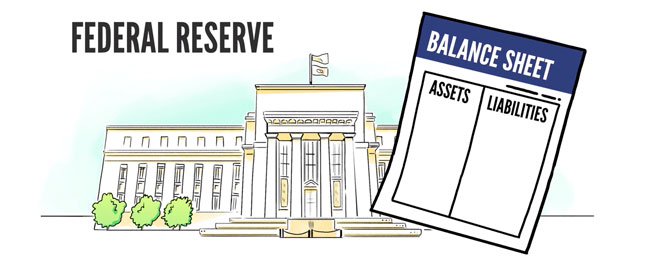During the global financial crisis, the Fed took extraordinary measures to stabilize the U.S. economy. Notably, it purchased long-term government securities to stimulate the economy, growing its balance sheet to over $4 trillion.
Now that the economy is stable, why is the Federal Reserve’s balance sheet still so big? Our new video summarizes research findings from a recent Economic Letter.
The U.S. economy is stable, so why is the Federal Reserve’s balance sheet still so big? We recap research findings from Research Advisor Andrew Foerster and Research Director Sylvain Leduc of the Economic Research Department at the Federal Reserve Bank of San Francisco (video, 1:28 minutes).
Transcript
Like any other business, the Federal Reserve has a balance sheet with assets and liabilities.
On our asset side, we mainly own government securities.
As America’s central bank, our biggest liability is the currency in circulation.
In 2008, the balance sheet was $850 billion, mainly due to the amount of currency in circulation.
Then the financial crisis hit.
Markets seized up.
People weren’t spending money.
So the Fed stepped in with a policy called quantitative easing, or QE.
With QE, the Fed purchased long-term government securities to stimulate the economy.
Our balance sheet grew to over $4 trillion.
Today, the economy is stable and the Fed is trading in many of the securities it purchased.
Does that mean the balance sheet will shrink back to its 2008 size? Not quite.
The balance sheet can’t be smaller than the amount of currency in circulation, and demand for currency has gone way up. Why? Our population is larger and needs more cash. And the dollar is a dependable store of value for foreign investors.
So, even if the Fed had never done QE, the balance sheet would still be at least about $1.7 trillion today.
Learn more at sffed.us/balance
You may also be interested in:
The views expressed here do not necessarily reflect the views of the management of the Federal Reserve Bank of San Francisco or of the Board of Governors of the Federal Reserve System.
